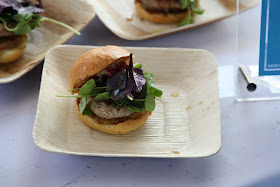
I recently received the exciting news that I will be leaving New York in six months to become a full-time student for the next two years in a place that is a very far cry from New York. While I am ecstatic to begin this new chapter in my life, I am going to be sad to leave behind all the people, places, and activities that have made my five years in New York so special, so like a person who's been told he has six months to live (and for me, the thought of enduring two years of cafeteria food and microwave dinners feels a bit like that), I have created a list of things to do before I leave this great city. While my list includes a lot of special, only in New York activities (picnic in Central Park, run around the island of Manhattan), it also includes a category of items that most New Yorkers would not dare do: "Challenging Foods to Cook!" In six months, I'll not only to be kitchen-less, but I'll also have limited time to do much cooking, so I have decided to try to make an effort all those foods that I have always wanted to make, but never made the time or the effort to cook.
First up on my cooking list was pho, the Vietnamese soup. After making it, I realized that making pho is not at all the challenge I assumed it would be, although after about four hours of preparing it plus a couple more hours wandering the streets of Chinatown in search of the right ingredients, a $5 bowl at a pho joint seems like an even better deal. I made
pho bo, or beef pho, using thin slices of cooked brisket and raw sirloin, but the technique for
pho ga (chicken pho) is fairly similar.
The first step to a great pho is to char the skins of the onions and ginger that go into the broth. If you don't have a hood or a well-ventilated kitchen, it's best to do this step under a broiler or outside on a grill. If you do, or you don't like me, but know you will be moving out of your apartment in six months, you can roast the vegetables over an open flame. You want to char the ginger and onions completely, about 15 minutes, turning them frequently as they roast. Once they are done, let them cool down. Rinse the vegetables under cool water, peeling off the charred skins.
The central component of pho broth is, of course, the beef bones. I used about 5 pounds of 2-inch thick shin bones. The first thing you'll want to do is to boil the bones in water for a few minutes, which will remove some of the impurities from the bones, allowing for a clearer broth. Once boiled, drain the bones.
To make the broth, you combine the beef bones, the onions and ginger, a cinnamon stick, a spoonful each of cloves, star anise, sugar, and salt, a generous pour of fish sauce, and thick strips of brisket with six quarts of water. Allow this mixture to simmer for an hour and a half. Then, remove the brisket and continue simmering the broth for another hour and a half. Drain the broth through a fine mesh sieve and refrigerate it overnight so that the fat solidifies. The following day, remove the fat from the broth.
The day that you plan to serve the pho, prepare all of the condiments and set them on the table. Lime juice, Thai basil, mint, blanched bean sprouts, Sriracha sauce, and hoisin are all go nicely with pho.
Once the broth is ready, prepare the bowls: boiled rice noodles, scallions, cilantro, thinly slice onions, thinly sliced cooked brisket, and thinly sliced raw sirloin. Then pour the hot broth on top of it all. It's perfection in a bowl.

















































